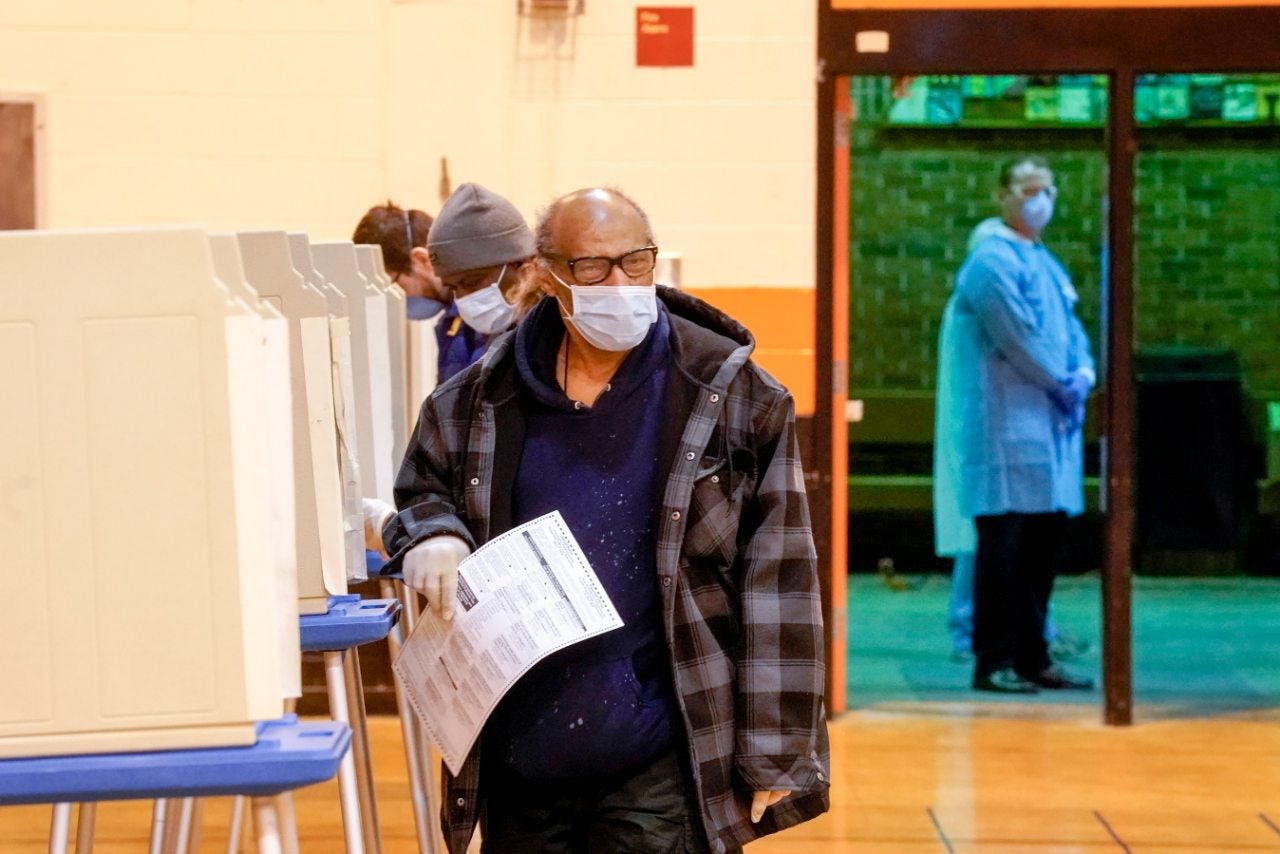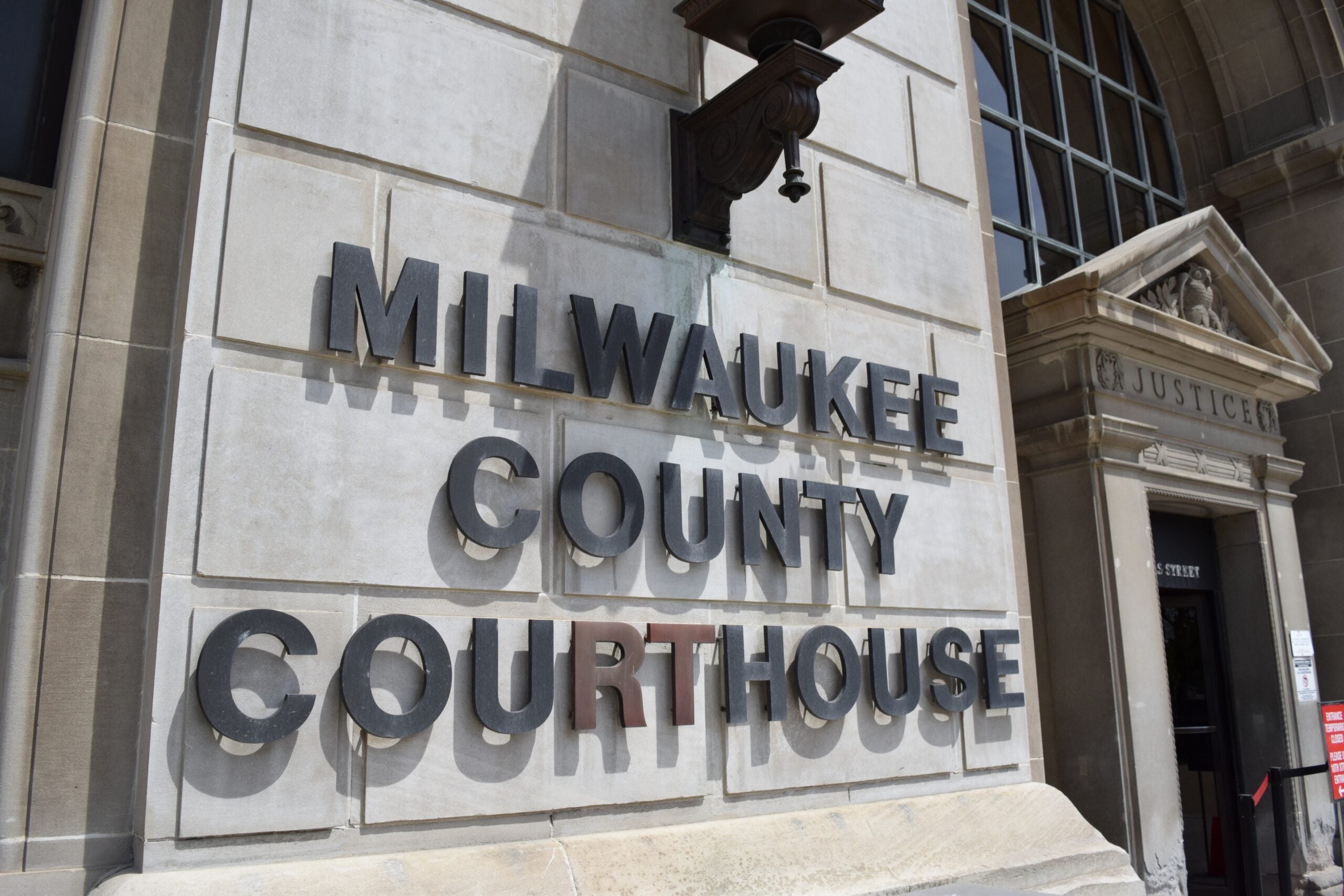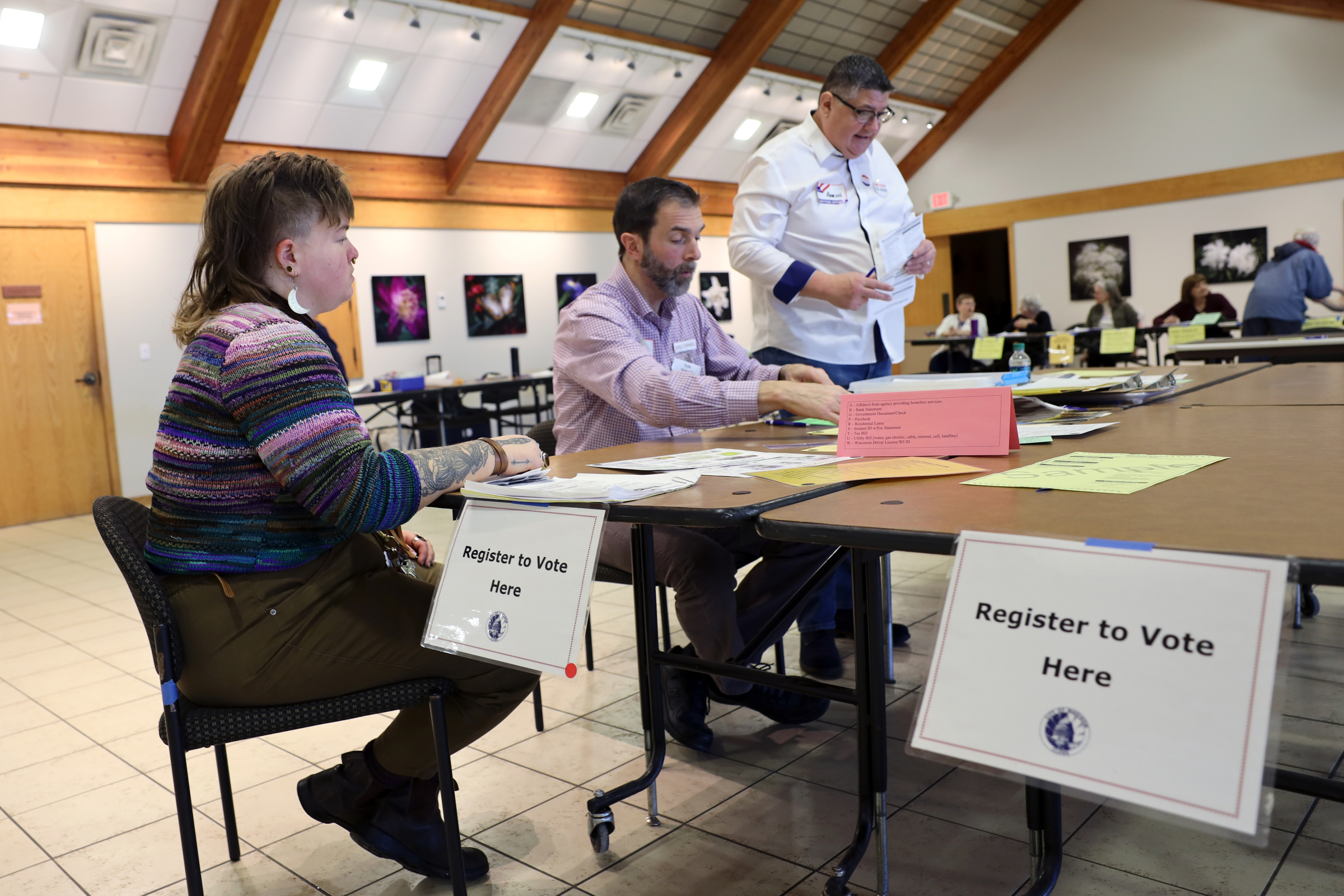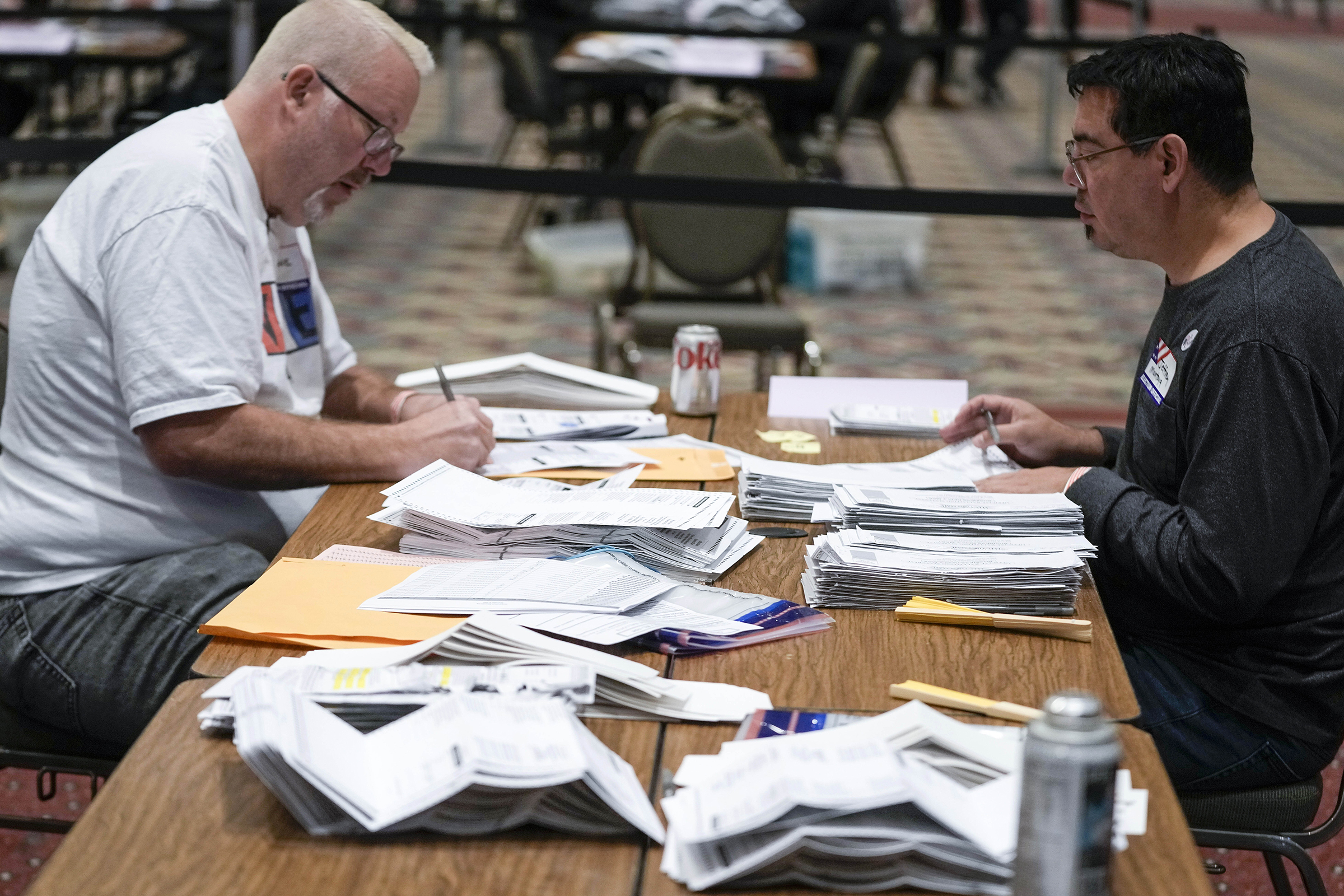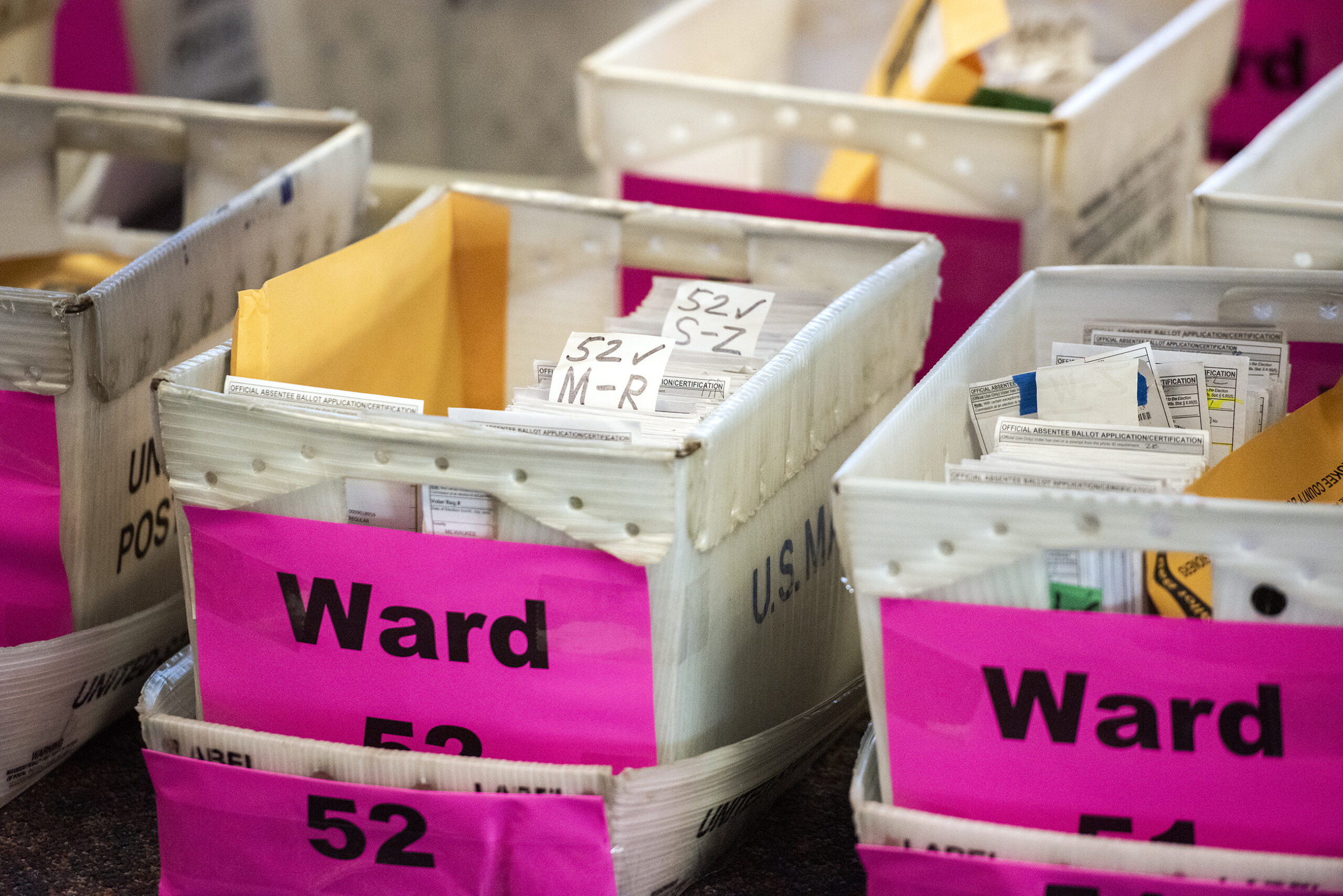Some ballots mailed before Tuesday’s election in Wisconsin might not be counted due to problems with postmarks, according to guidance issued to the state elections agency on Friday afternoon.
Under a U.S. Supreme Court decision issued earlier this week, ballots cast for Tuesday’s election can be accepted by clerks until 4 p.m. Monday as long as they were postmarked by election day — April 7. The six-day buffer was implemented to accommodate ballots mailed on election day and delays in the postal service amid the COVID-19 pandemic.
But election officials across the state are reporting ballots have begun to arrive without postmarks or with irregular marks, including postmarks that are illegible or just indicate “April 2020,” without a specific date.
Stay informed on the latest news
Sign up for WPR’s email newsletter.
A memo posted Friday by the Wisconsin Elections Commission outlined some of the questionable marks.
During a Friday afternoon meeting, commissioners sparred about what guidance should be issued to clerks about those ballots.
Commissioner Ann Jacobs, who was appointed by Democratic state Senate Minority Leader Jennifer Shilling, urged the commission to grant more leeway to clerks to count ballots. She said U.S. Postal Service workers should be able to certify some ballots were in their possession on or before election day, even if they don’t have the required postmark.
“How many people are we going to disenfranchise over a decorative stamp?” Jacobs said.
But Commissioner Bob Spindell, appointed by Republican state Senate Majority Leader Scott Fitzgerald, argued if the ballot doesn’t include a visible postmark dated April 7 or before, it shouldn’t be counted.
“I think the Supreme Court was pretty clear … the United States Supreme Court is the top court of the land,” Spindell said.
The commission ended up approving guidance to clerks that ballots must bear a postmark of April 7 or earlier in order to be counted, unless the ballot has a “April 2020” postmark and a postal service official provides a statement that postmark was only used on election day.
According to the commission, about 1.2 million mail-in ballots were requested for the election. As of Friday morning, about 1 million had been recorded by clerks as returned.
According to commission administrator Meagan Wolfe, some of those returned ballots might have postmark issues. It won’t be clear how many ballots are rejected until election officials complete an assessment of participation. They have 30 days after election day to do that.
‘It Would Have Been Mailed Earlier’
In an interview after the commission met Friday, Scott Van Derven, president of the Wisconsin State Association of Letter Carriers, said absentee ballots that arrived at clerks’ offices Wednesday would have almost certainly been mailed by election day, and probably earlier.
“More likely than not, it would have been mailed earlier,” Van Derven said.
Van Derven said that’s because mail first has to travel to mail processing centers in Milwaukee, Green Bay or Minneapolis before it reaches its final destination.
He said a smaller community could have theoretically collected mail on the Wednesday after the election and hand-delivered it to a clerk the same day.
“But that is not normally how mail is processed,” Van Derven said.
He said one of the issues at the heart of this dispute — the requirement that mail must be postmarked by a certain date — doesn’t reflect the way the country’s mail system works.
“According to the domestic mail manual, it does not have to be canceled,” Van Derven said. “So, kind of an ambiguous term.”
Numerous problems with absentee ballots have surfaced for this election.
A number of voters across the state have said requested ballots never materialized at their homes before election day, forcing them to choose between voting in person or not voting at all.
Van Derven said multiple factors could have been behind the delay. Clerks, he said, were likely overwhelmed with requests for the ballots, and the ballots themselves could have also been a problem in machines that process mail.
“It’s a very unusual-sized envelope so there’s a possibility that they were kicked out of the processing machines, which run really fast,” he said.
Van Derven said the record number of ballot requests could have also overwhelmed the postal system, which was simultaneously delivering with an increase in campaign literature.
“You had a high volume of just the political mail that the candidates themselves were sending out because they can’t obviously, through social distancing, go out and do campaign appearances and all that sort of thing, so they relied very heavily on getting their message out through the mail,” Van Derven said.
Gov. Tony Evers attempted to push back the election until June with an emergency order Monday. The Republican-controlled state Legislature immediately made an appeal to the state Supreme Court, which ruled 4-2 to strike the order down. GOP lawmakers opposed delaying the election, claiming it would leave vacancies in important local offices across the state.
The Democratic presidential primary, a state Supreme Court race, a proposed amendment to the state constitution, and thousands of local offices were on ballots across Wisconsin.
Election officials will begin releasing election results on Monday after 4 p.m.
Editor’s note: WPR’s Shawn Johnson contributed reporting.
Wisconsin Public Radio, © Copyright 2024, Board of Regents of the University of Wisconsin System and Wisconsin Educational Communications Board.

